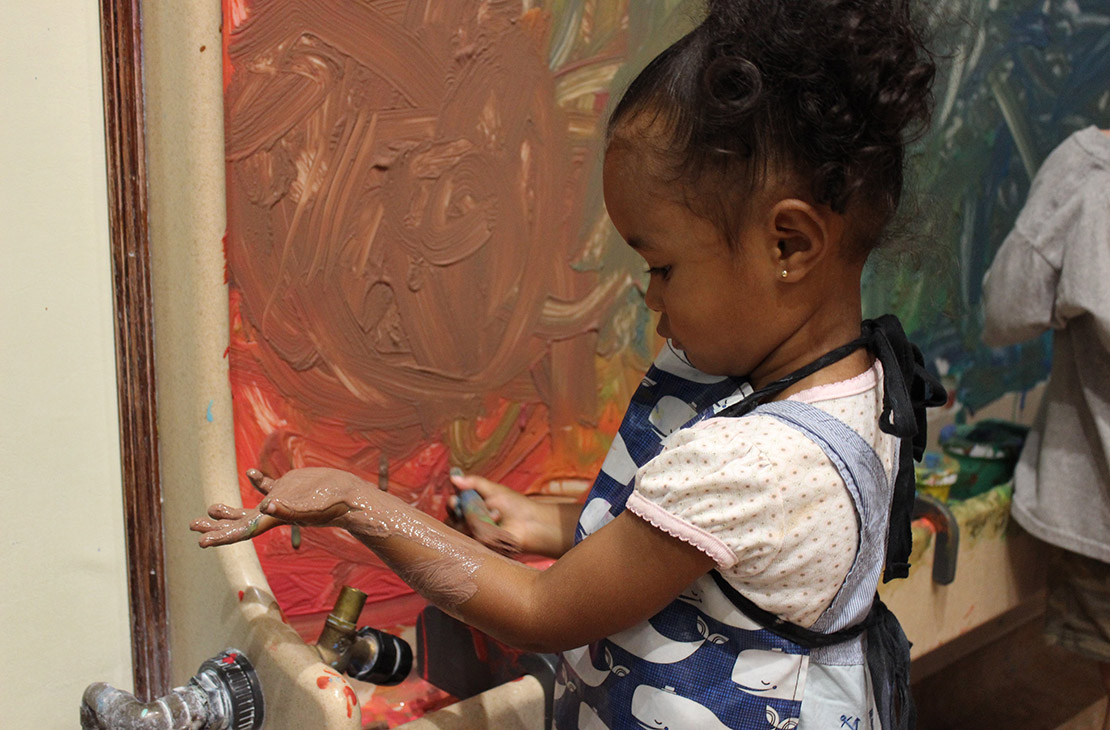by Anjali Shastry
“Without art, there is an incompleteness that nothing can overcome. Through correlation and efficient co-operation, art work becomes a ‘helping hand, a kind of connecting link that binds all subjects to it and makes every study at school more interesting and valuable.’” — W.G. Whitford, from “A Brief History of Art Education in the United States”, October 1923
Almost 100 years after Whitford argued for integrating the arts into school curriculum, we’re seeing an across-the-board disinvestment in arts education. When school budgets face downsizing, it is easier to justify cutting the arts than say, math or history, because the arts are not measured by any standardized tests.
This speaks to a fundamental misunderstanding of what role the arts should play in our lives.
Not every child who plays with paint in the classroom will grow up to make millions at Art Basel. Not every child who plays cello in the school orchestra will become first chair at the Chicago Symphony Orchestra. And not every child who spends hours upon hours trying to nail an arabesque penchée will be the next Misty Copeland.
So why bother at all?

Families can try new types of art together, and engage with each other both creatively and collaboratively.
Most children, no matter how casually they pursue a particular artistic medium, develop a growth mindset by flexing their creative muscles. Standing in front of a blank canvas with a paintbrush in your hand can be intimidating. It can be anything you want it to be, so long as you actually put paintbrush to canvas and have a go at it. It might turn out great, or it might turn out not so great. Children are not afraid to take those risks.
The arts are a discipline where there are no wrong answers. According to former Stanford University professor and arts educator Elliot Eisner, the arts teach children that questions can have multiple solutions, and that there are many perspectives and ways of seeing the world. Engaging in artistic endeavors helps children maintain a new and fresh mindset that is about discovery, exploration, and the process — not necessarily the outcome or final product.

Movin’ and groovin’ to some Bollywood jams at Diwali: Festival of Lights.
Budding artists learn how to envision something in their head and go through the process of executing their vision. Whatever the end result, the questions abound. Is the art communicating what they want? Are they pleased with the result? How can they adjust? How can they improve upon their creation/process next time?
Asking these questions allow children to delve into the territory of the unknown, and that act of making something allows their imagination to run wild!

The set-up for our “Selfie!” activity in the Art Loft. Visitors looked at themselves in these decorated mirrors and drew what they looked like — or what they wanted to look like!
In the Museum’s Art Loft, we offer prompts for our visitors to juice their creativity. The ways in which a single prompt — What do you see when you look in the mirror? — yields dozens of different interpretations is incredible. Each person has different answers, different experiences, and different perspectives that inspire other people.
Our hope for every child is that they are able to create art without fretting about getting it right or wrong. They will paint red trees and green skies. They will pluck at the strings of a guitar until they find a tune that they like. And even if they forget their line in the school play, they will still hazard a guess.

Visitors tried indigenous ancestral Mexican instruments with musician Martin Espino at a summertime Lunada.
These risks aren’t “mistakes.” Taking a chance is an essential part of the process of growing and interacting with the world boldly. The arts are unique in that risks are to be celebrated, not stigmatized. When children build the confidence to be wrong, they are more likely to try new things and stumble upon a new discovery. No matter what disciplines they choose to pursue in their education and career, a lifelong love of the arts and a strong creative foundation will help them grow as critical thinkers and innovators.
Thanks to Cecilia Clark.

